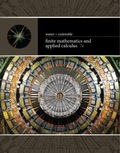
(a)
The correct option which suits the statement “The graph of
(A): has a point of inflection
(B) has no point of inflection
(C): may or may not have a point of inflection, but the graph do not provide enough information.
(b)
The correct option which suits the statement “At around
(A) At a maximum,
(B) Increasing at the maximum rate
(C) Just beginning to decrease.
(c)
The correct option which suits the statement “For
(A) Increasing at decreasing rate,
(B) Decreasing at an increasing rate
(C) Increasing at an increasing rate.
Want to see the full answer?
Check out a sample textbook solution
Chapter 12 Solutions
EBK FINITE MATH AND APPLIED CALCULUS
- Question Given the graph of f(z) below, identify the graph of f'(z). Select the correct answer below: -7-6-5-4-3-2 1 2 3 4 5 6 + 123. -7-6-5-4-3 12 + 4-3-2-1 1arrow_forwardFind this expression in frequency domain in a expression y(t), in time, that is.arrow_forwardplease dont use chat gptarrow_forward
- Question Given the graph of f(z) below, find the graph of the derivative of f(z). Select the correct answer below: ° 7-6-5-4-3 123 ° ° 2 -7-6-5-4-3- 123 -° 2-4 -°- °- -7-6-5-4-3-2-1 1 5 +arrow_forwardWhich of the functions shown below is differentiable at = 0? Select the correct answer below: -7-6-5-4- -6-5-4-3-21, -7-6-5-4-3-2 -7-6-5-4-3-2-1 2 4 5 6 -1arrow_forwardcorrect answer is Acould you please show me how to compute using the residue theoremarrow_forward
- Algebra & Trigonometry with Analytic GeometryAlgebraISBN:9781133382119Author:SwokowskiPublisher:Cengage
